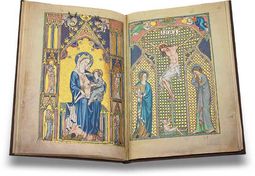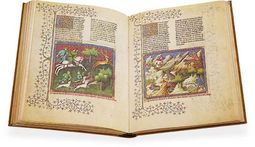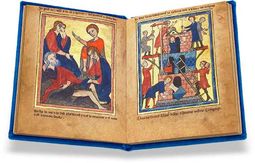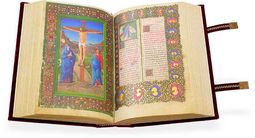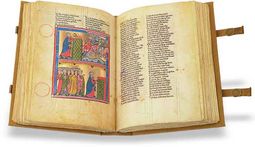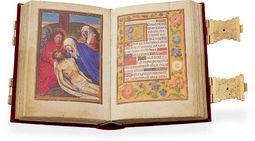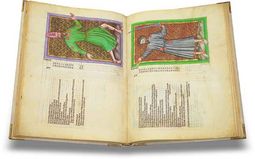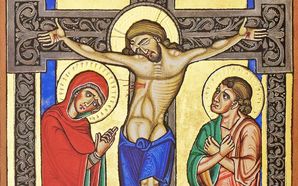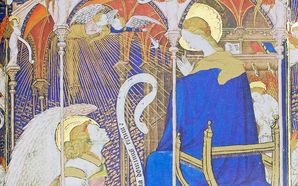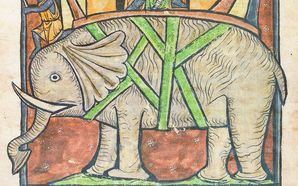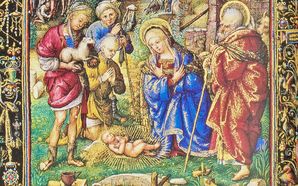Gothic Illumination
Gothic art first emerged in Northern France during the second half of the 12th century before spreading across Europe, enduring as late as the 16th century in Northern Europe. Evolving from Romanesque art, the stylistic transition is most pronounced in architecture, especially the change from rounded Roman arches to pointed ones, possibly the result of contact with Islamic architecture in the course of the Crusades and Spanish Reconquista. Gothic buildings were airier, more open, and more colorful due to larger stained-glass windows made possible by flying buttresses and other advances in engineering.
The transition in painting, both larger forms like panel painting and frescoes as well as manuscript illumination, is more gradual at both ends of the Gothic period, gradually transitioning from the Romanesque and subsequently into the Renaissance. In comparison to the Romanesque, Gothic illumination is more animated with elongated figures and expressive faces presented in decorative frames resembling contemporary architecture.
The depiction of people, animals, and plants all gained a much greater degree of realism and detail. Proper landscape painting first began to emerge, and the roots of humanism can even be discerned in the artistic décor as well as an explosion in the production of secular texts. The term “Gothic” was originally used as a pejorative by 16th century Italians like Giorgio Vasari (1511-74) to describe a style that they felt was disorderly and chaotic in comparison to the classical forms of the Renaissance that never really went out of style in Italy. Gothic has been redeemed since the 18th century and is now considered to be the most spectacular and iconic style of medieval art and architecture.
Demonstration of a Sample Page
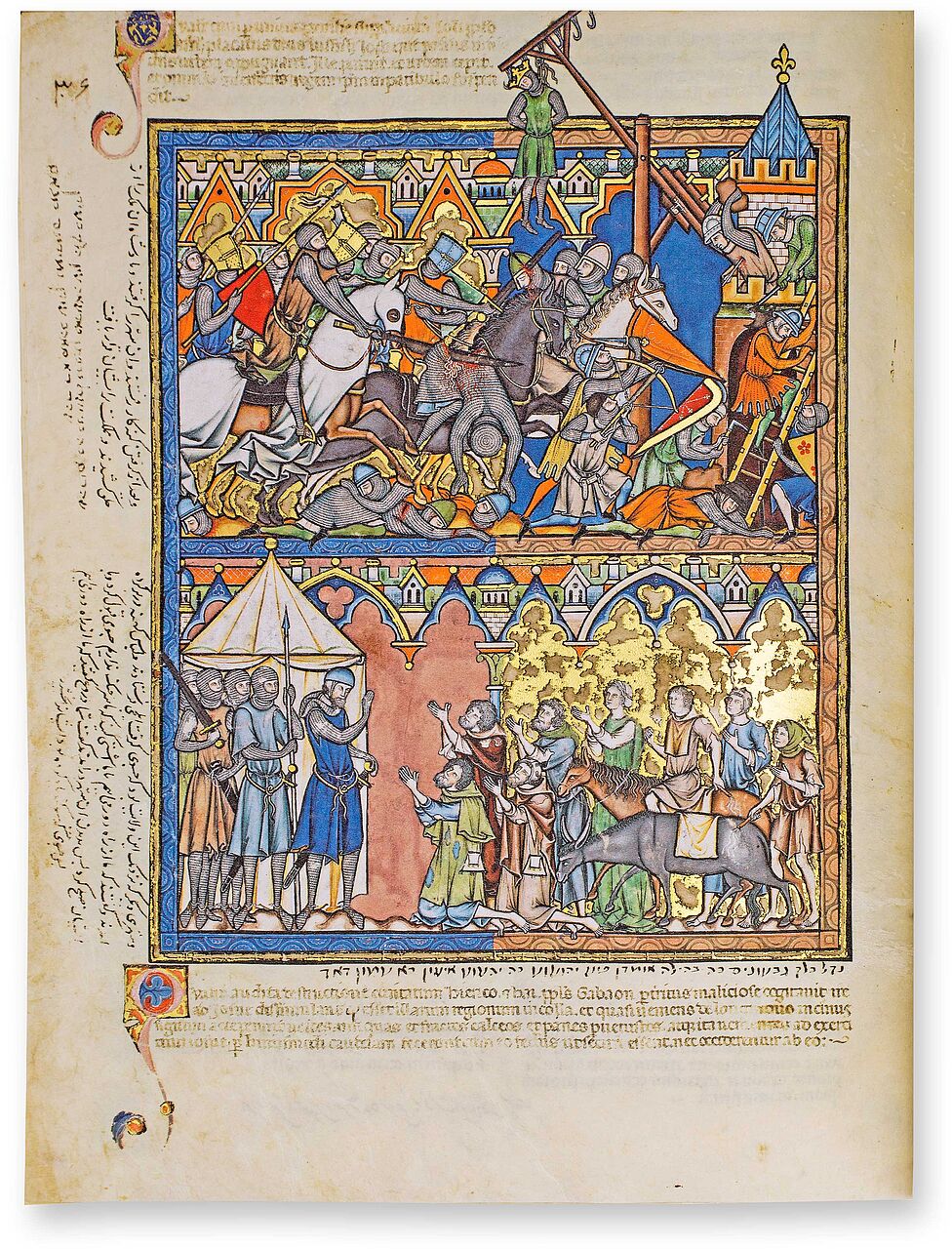
Morgan Crusader Bible
Conquest of Ai and League with Gibeonites
Events from the Book of Joshua are depicted in register in some of the most famous miniatures in all of medieval illumination. Not only are they a terrific specimen of the Gothic style, but the events of the Old Testament play out before Gothic architecture with distinctively stylized arches – a glimpse of the 13th century.
The Israelites storm the city of Ai wearing contemporary long mail shirts, shields, helmets, and weapons in a cacophony of violence. The king of Ai is the crowned figure being hung from a siege engine as the walls fall to attackers climbing ladders. Although much of the gold leaf background has been worn off, the bright color palette still brings the terrifying scene to life. Below, the victorious Joshua, in blue, accepts an alliance with the treacherous Gibeonites.

